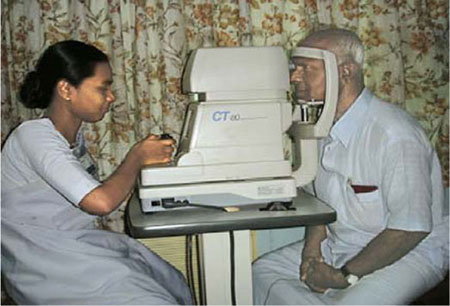Posterior Vitrectomy Machine
A Posterior Vitrectomy Machine is a highly specialized surgical device used in ophthalmology for performing vitrectomy procedures. This surgical intervention involves the removal of the vitreous humor (the gel-like substance inside the eye) to address various retinal and vitreous disorders, such as retinal detachment, diabetic retinopathy, macular holes, and epiretinal membranes.
With advanced technology, the Posterior Vitrectomy Machine allows ophthalmic surgeons to perform delicate surgeries with precision and safety, ensuring improved patient outcomes and faster recovery.The Posterior Vitrectomy Machine represents a cornerstone of modern vitreoretinal surgery. Its advanced technology and multifunctional capabilities enable ophthalmic surgeons to perform highly delicate procedures with confidence and precision.

How a Posterior Vitrectomy Machine Works
The vitrectomy machine is designed to facilitate intricate retinal surgeries through the following functions:
Vitreous Cutting
- The machine uses a microscopic cutting tool (vitrector) to delicately remove the vitreous humor, layer by layer.
- Advanced systems allow adjustable cutting rates to suit the complexity of the surgery.
Irrigation
- A fluid infusion system maintains proper intraocular pressure (IOP) during surgery, preventing eye collapse and ensuring stability.
Aspiration
- Precisely removes cut vitreous and other intraocular debris.
Illumination
- Provides a bright, focused light source to enhance visibility during surgery, especially in the posterior segment of the eye.
Gas or Fluid Exchange
- The machine can replace the removed vitreous with saline, air, gas, or silicone oil, depending on the surgical requirements.
High-Speed Vitrector
- Provides rapid and precise vitreous cutting with minimal traction on the retina.
Integrated Visualization
- Equipped with advanced optical systems and illumination for clear visualization of the posterior segment.
Customizable Settings
- Surgeons can adjust infusion rates, cutting speeds, aspiration levels, and illumination intensity for tailored surgical control.
Safety Mechanisms
- Automated controls to maintain intraocular pressure and prevent accidental damage to delicate retinal tissues.
Multifunctionality
- Many machines combine vitrectomy with capabilities for cataract surgery and laser photocoagulation, providing a comprehensive solution.
Applications of a Posterior Vitrectomy Machine
Retinal Detachment Repair
- Removes vitreous and scar tissue to facilitate reattachment of the retina.
Diabetic Retinopathy
- Treats complications such as vitreous hemorrhage or tractional retinal detachment.
Macular Surgery
- Addresses macular holes and epiretinal membranes.
Intraocular Foreign Body Removal
- Removes foreign objects lodged in the vitreous or retina.
Management of Endophthalmitis
- Clears infected vitreous in severe eye infections.
- The machine can replace the removed vitreous with saline, air, gas, or silicone oil, depending on the surgical requirements.
